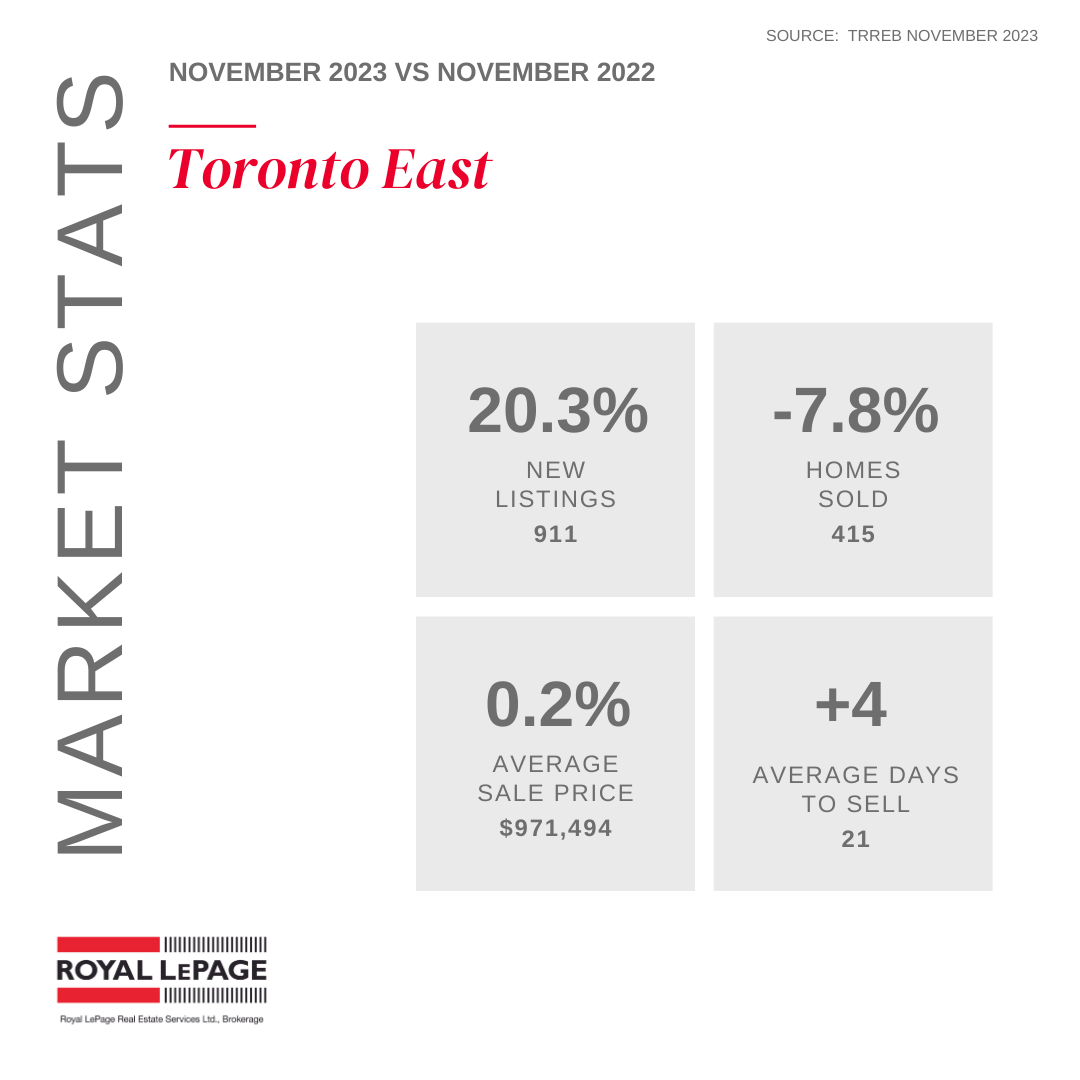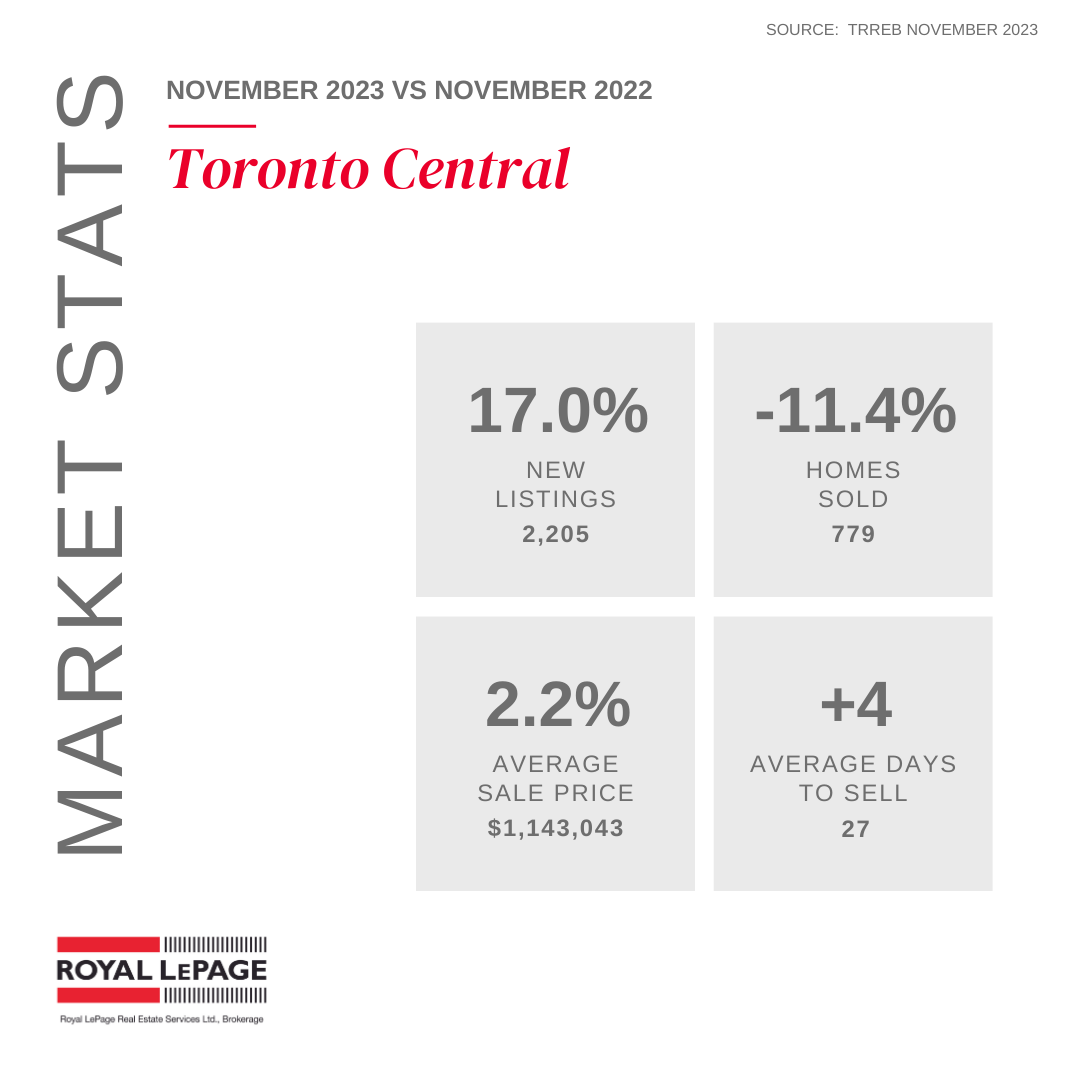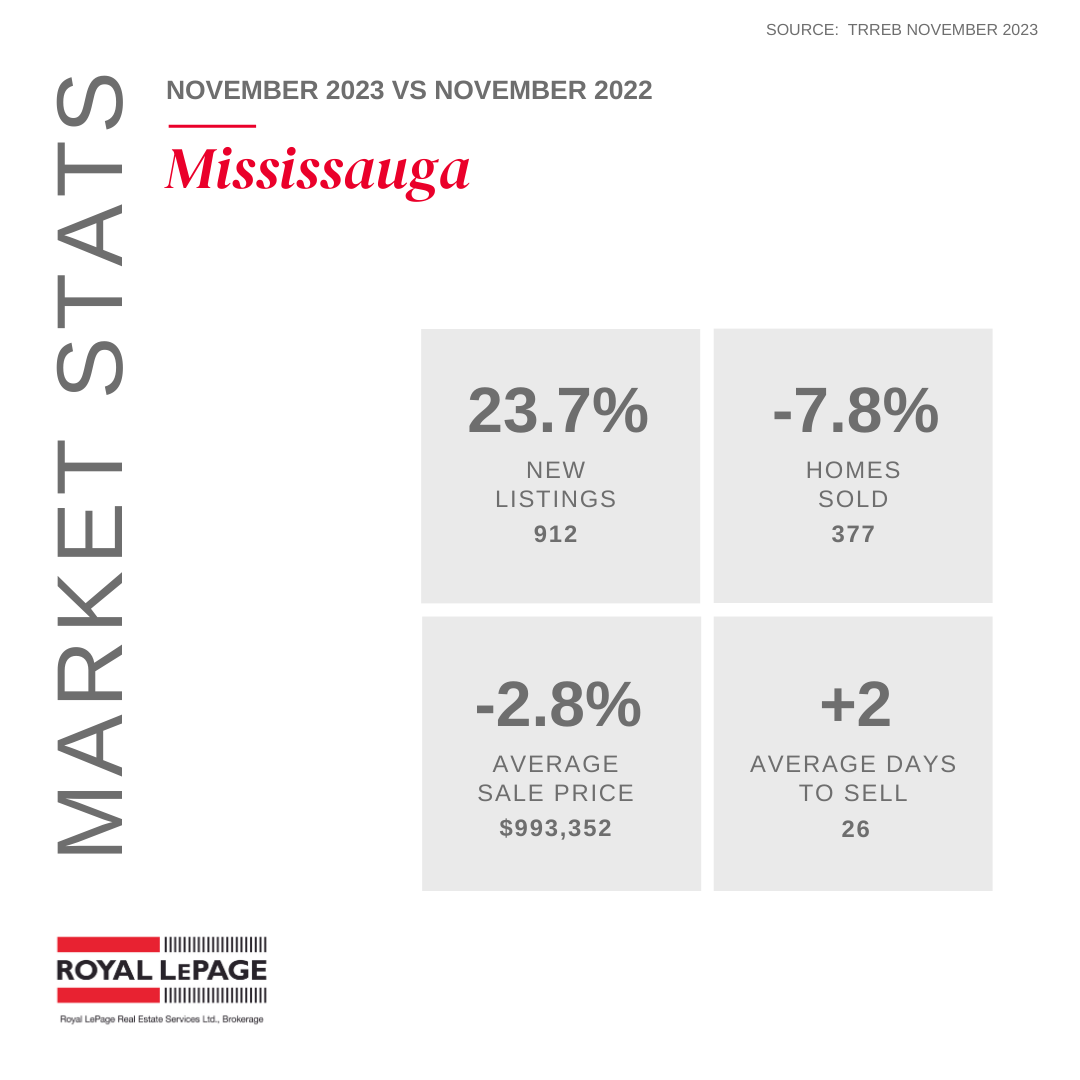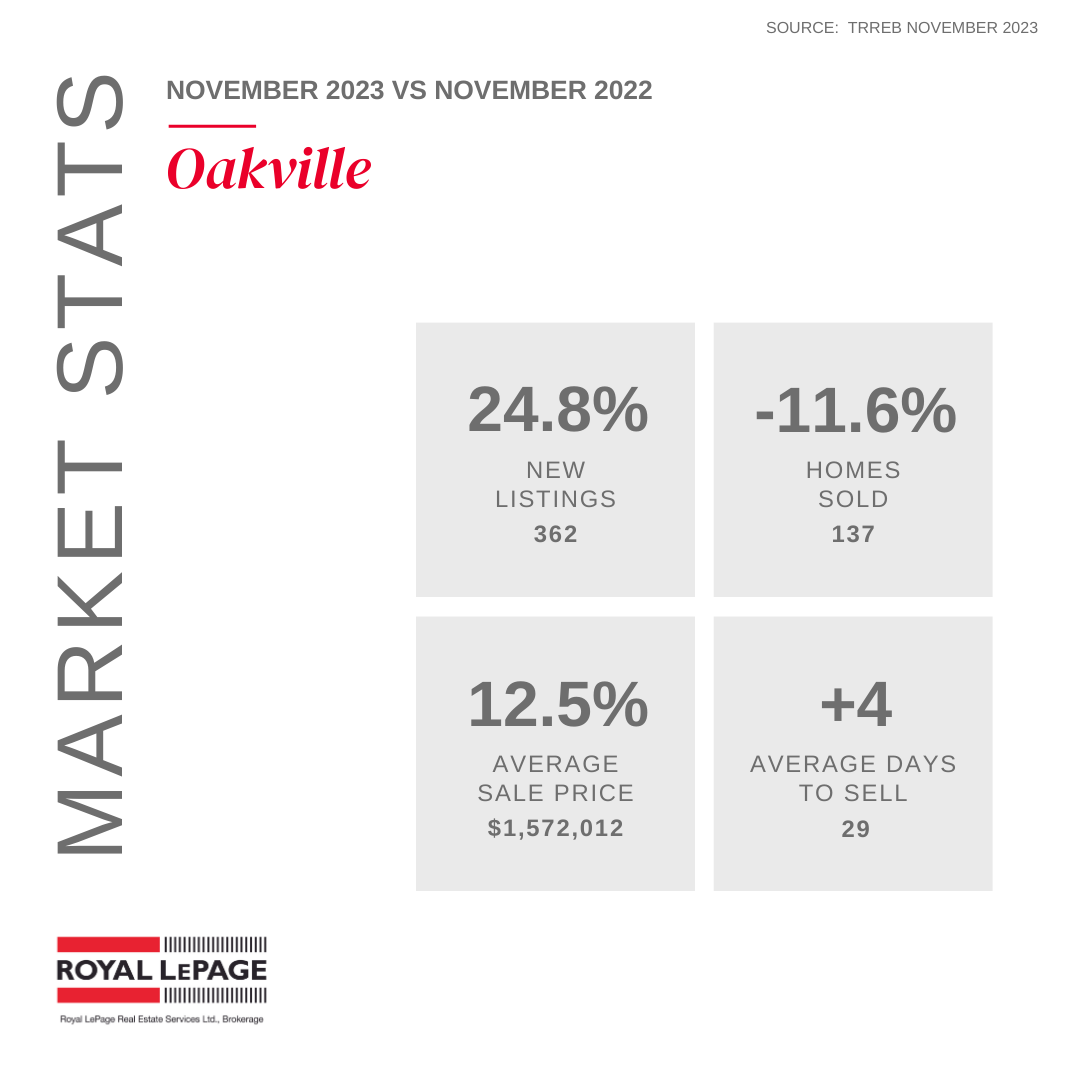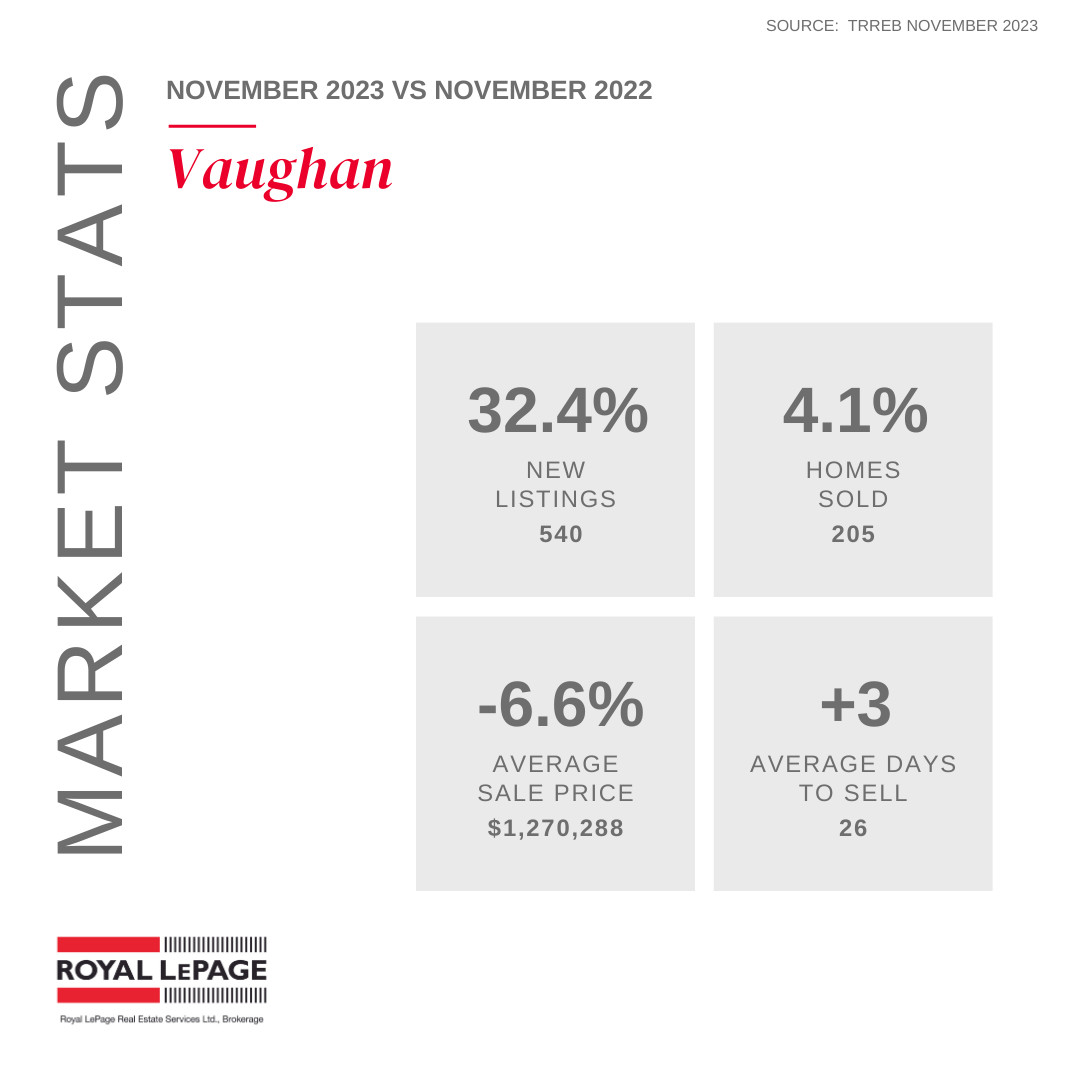As November concluded, the aggregate value of a GTA home remains at $1,082,179, mirroring last year's figures. Despite an initial surge in the first half of the year, mid-year interest rate increases led to a temporary dip in home sale prices, marking the second-lowest point for home values in the year.
The surge in inventory appears to have slowed, possibly due to winter seasonality or subdued buyer and seller activity amid heightened borrowing costs. November's total inventory reached 16,759 active listings, showing a monthly decrease of 2,781 but a year-over-year rise of 4,849 available properties for sale.
As economists commence speculating on potential interest rate cuts, possibly as early as next spring, discussions about when the market might reclaim its previously robust momentum have initiated. This concept is underscored in a recent article featured in the Globe and Mail. “Bay Street prognosticators are currently pricing in a full percentage point of rate cuts next year as Canada flirts with recession. Home prices have much precedent for rising during recessions, by the way. That’s because homebuyer incomes don’t dive all that much and buying power rises as rates drop. But consider this: If average mortgage rates fell merely one percentage point, all it would take to cancel out that nationwide affordability improvement would be a $63,000 bounce in the $656,625 price of an average home.
That kind of gain can happen in two months, as it did last spring. It was only 10 months ago when the Bank of Canada’s premature rate pause inspired homebuying enough to drive prices $74,167 higher in two months and $116,840 (19 per cent) higher in just four months. Part of that rise was because of a change in the types of homes purchased – what economists call the “composition effect” – but the point remains: low rates and low prices attract high demand.”
With stagnate sale prices and anticipated rate cuts, the current market offers buyers potentially the most favourable conditions in years. However, the likelihood of this opportune period lasting for an extended duration appears low.
Examining individual asset classes, the semi-detached market remains stalwart in price stability, maintaining a sales price within a $42,000 band since July. November's average sales price of $1,060,829 reflects a 2% yearly gain, with a notable 4.66% increase in sales compared to November 2022, the only asset class experiencing yearly gains in sales.
In the GTA detached segment, monthly losses led to an average sales price of $1,403,500, still $61,652 above the lows of January. For the first time in 2023, inventory declined to 6,834, a 20% decrease from October. While the sales environment remained cautious, completing 1,881 sales marked a 42% decrease from the seasonal average over the preceding ten years.
The Condo asset class remains the most active, with a 50% yearly increase in inventory, ending the month with 6,579 units for sale. However, with 1,212 sales in the month, the lowest total since January, values remain flat on a yearly comparison.
In recent news, the spotlight has been on the looming cliff of over 2 million mortgage renewals across Canada. A recent announcement from Chrystia Freeland brings relief to those potentially impacted by the higher interest rate environment. Under the Canadian Mortgage Charter, lenders will have to contact homeowners four to six months in advance of their mortgage renewal to inform them of their renewal options, which must include the ability to make lump sum payments to avoid negative amortization and the option to sell their principal residence without a prepayment penalties. Lenders will also be required to offer temporary extensions of amortization periods for mortgagors at risk and to waive any fees and costs for doing so. In addition, banks won’t be able to charge “interest on interest” if a borrower is temporarily in a period of negative amortization, which means they are covering just the interest without paying down any principal.
For homeowners, delaying the search for the perfect deal may have repercussions. The prevailing wisdom suggests the time to buy is when a suitable property is found that fits one's needs and affordability. With factors like immigration, housing supply constraints, and potential lower interest rates, the current period could be viewed as an opportune time to buy, with less competition compared to what may transpire in 2024.
Should buyers be holding out for real estate bargains?
Tens of thousands of Canadians are camping out for real estate discounts. Armed with prayers and
price drop forecasts from economists, they’re waiting for the housing market to slap big red “On
Sale” signs on front lawns this winter. What’s more, two-thirds of prospective buyers said they’re holding their breath for lower mortgage rates before pulling the trigger, according to a BMO survey conducted last spring.
So, let’s paint this picture. We’ve got latent demand from all these sidelined homebuyers waiting for lower prices and rates – a Goldilocks dream in one of Earth’s most expensive housing regions. Meanwhile, housing inventories remain low, population growth is excessive, incomes are growing faster than inflation, rents are soaring (which increases homebuying’s appeal on a relative basis), and our government is dead set on keeping hard-up mortgagors in their homes through policies that encourage banks to work with borrowers who bit off more mortgage than they can chew.
Add lower prices and rates to this soap opera, and you may have everyone with a down payment
thinking it’s Black Friday for real estate, sprinting to capture fleeting “affordability” improvements. History has proven that time and again. But consider this: If average mortgage rates fell merely one percentage point, all it would take to cancel out that nationwide affordability improvement would be a $63,000 bounce in the $656,625price of an average home.
That kind of gain can happen in two months, as it did last spring. It was only 10 months ago when the Bank of Canada’s premature rate pause inspired homebuying enough to drive prices $74,167 higher in two months and $116,840 (19 per cent) higher in just four months. Part of that rise was because of a change in the types of homes purchased – what economists call the “composition effect” – but the point remains: low rates and low prices attract high demand.
This isn’t a new phenomenon. Canada saw similar bounces in 2001, 2009 and 2020. READ MORE
If you would like to understand how these statistics relate to your specific situation or if you're curious about the current value of your property or your affordability for a new purchase, please don't hesitate to reach out.
If you found this article informative and useful, we kindly ask you to show your support by hitting the "Like" and "Share" buttons. Your engagement is greatly appreciated.
NovemberMarketReport #realestatemarketreport #royallepage #torontoliving #torontomarket #thejunction #highpark #bloorwestvillage #swansea #homesellers #homebuyers #realestatebroker #lubabeleybroker #sellingrealestate #sellingtorontohomes #serviceyoucantrust #workingforyou #lubabeleyrealestateservices #royallepagebroker


